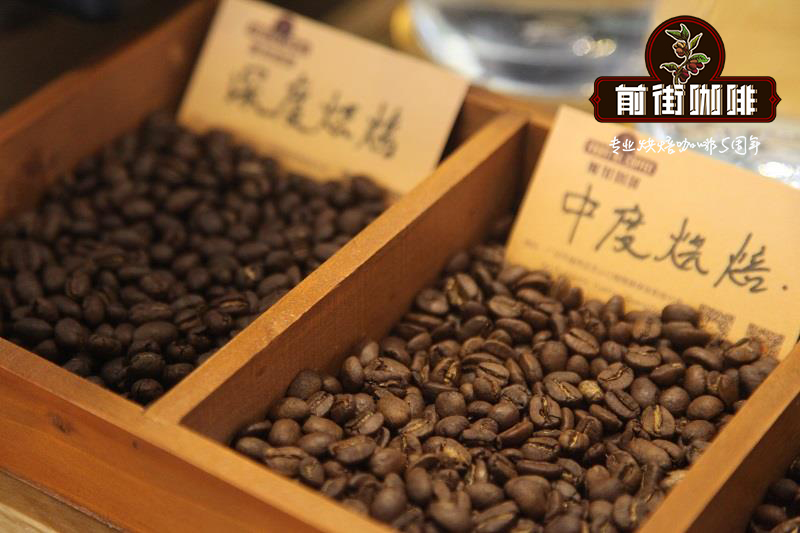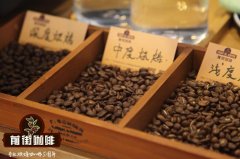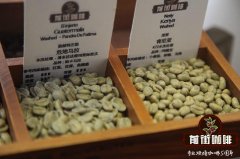Can you drink coffee with different roasting degrees? the effect of coffee roasting degree on coffee aroma

Professional coffee knowledge exchange more coffee bean information please follow the coffee workshop (Wechat official account cafe_style)
The aroma of coffee comes from the roasting degree of coffee.
The aroma and taste of coffee are produced after roasting. In the process of baking, the moisture of raw coffee beans is slowly released, the weight is reduced, the color deepens, the volume expands, and the aromatic oil is slowly released. In addition, the large amount of chlorogenic acid originally contained in raw beans will gradually disappear with the baking process, releasing good-smelling fruit acid, and its taste varies with the baking time. In the following picture, you can see the change in the shape of coffee beans during roasting.
The roasting degree of coffee affects the flavor of coffee
Before we get to the point, let's get to know a few proper terms to describe the flavor of coffee:
Acidity (acidity): the stimulation felt at the edge of the tongue when drinking coffee. Unlike the acid of lemon, coffee is a refreshing, refreshing feeling that boosts the taste, sometimes called brightness. Acidity is a very important characteristic of coffee, coffee without acidity will be very insipid.
Aroma: the aroma of brewed coffee is more varied than that felt by the tongue. The adjectives commonly used to describe the aroma of coffee are fruit-like, earthy, smoky, flowery, berries, nuts and so on.
Body: the taste of coffee in the mouth, from light as water or skim milk to thick as milk or cream, syrup.
Aftertaste: similar to the concept of wine tasting, it refers to the taste that remains in the mouth after drinking coffee. Some coffee has the aftertaste of cocoa or chocolate, while others have fruit, berries, nuts and so on.
Balance (balance): this is an assessment of the overall taste of coffee. Good beans have a balanced, layered, and soft aroma, while bad beans usually show a single flavor.
In addition to the above proper nouns, there are several common adjectives that describe high-quality coffee:
Mellow: coffee with low to medium acidity and good balance.
Mild (mild): indicates that coffee has a harmonious, delicate flavor, usually refers to high-altitude South American coffee.
Soft: low-acidity, slightly sweet coffee, usually Indonesian coffee.
Now that we know the terms that describe the flavor of coffee, let's take a look at what factors affect the taste of coffee.
How to choose the roasting degree of coffee beans
Main baking degree & characteristic comparison
Aroma offers the following five baking degrees and features to make it easy for coffee lovers who support us to choose.
Shallow baking: full of aroma and strong acidity. Suitable for you with special needs
Medium roasting: retains most aromas with bright acidity; the shallowest roasting degree recommended by aroma for coffee lovers
Medium baking +: soft and sweet with sour fruit
Medium and deep baking: mellow taste with caramel aroma
Deep baking: the taste is mellow and bitter comes from caramelization. Suitable for making lattes with milk and baking degree
Important Notice :
前街咖啡 FrontStreet Coffee has moved to new addredd:
FrontStreet Coffee Address: 315,Donghua East Road,GuangZhou
Tel:020 38364473
- Prev

How to judge the best time for coffee roasting? What's the difference in the taste of coffee with different roasting degrees?
Professional coffee knowledge exchange more coffee bean information please follow the coffee workshop (Wechat official account cafe_style) what are high-quality coffee beans? Recall that you have had coffee that tastes good in the past, which probably has two characteristics: first, it has a charming aroma, and second, it tastes good. Different varieties of coffee beans have different tastes, and personal preferences vary, of course, but
- Next

Coffee roasting degree how to judge roasting degree from sound, color and aroma how to choose roasting degree
Professional coffee knowledge exchange more coffee bean information Please follow the coffee workshop (Wechat official account cafe_style) in Taiwan, drinking coffee has become an indispensable enjoyment, more and more people choose to make coffee at home, not only for interest, but also for better coffee quality. If you have done, or are going to do, then the first thing you need to know is
Related
- Beginners will see the "Coffee pull flower" guide!
- What is the difference between ice blog purified milk and ordinary milk coffee?
- Why is the Philippines the largest producer of crops in Liberia?
- For coffee extraction, should the fine powder be retained?
- How does extracted espresso fill pressed powder? How much strength does it take to press the powder?
- How to make jasmine cold extract coffee? Is the jasmine + latte good?
- Will this little toy really make the coffee taste better? How does Lily Drip affect coffee extraction?
- Will the action of slapping the filter cup also affect coffee extraction?
- What's the difference between powder-to-water ratio and powder-to-liquid ratio?
- What is the Ethiopian local species? What does it have to do with Heirloom native species?

